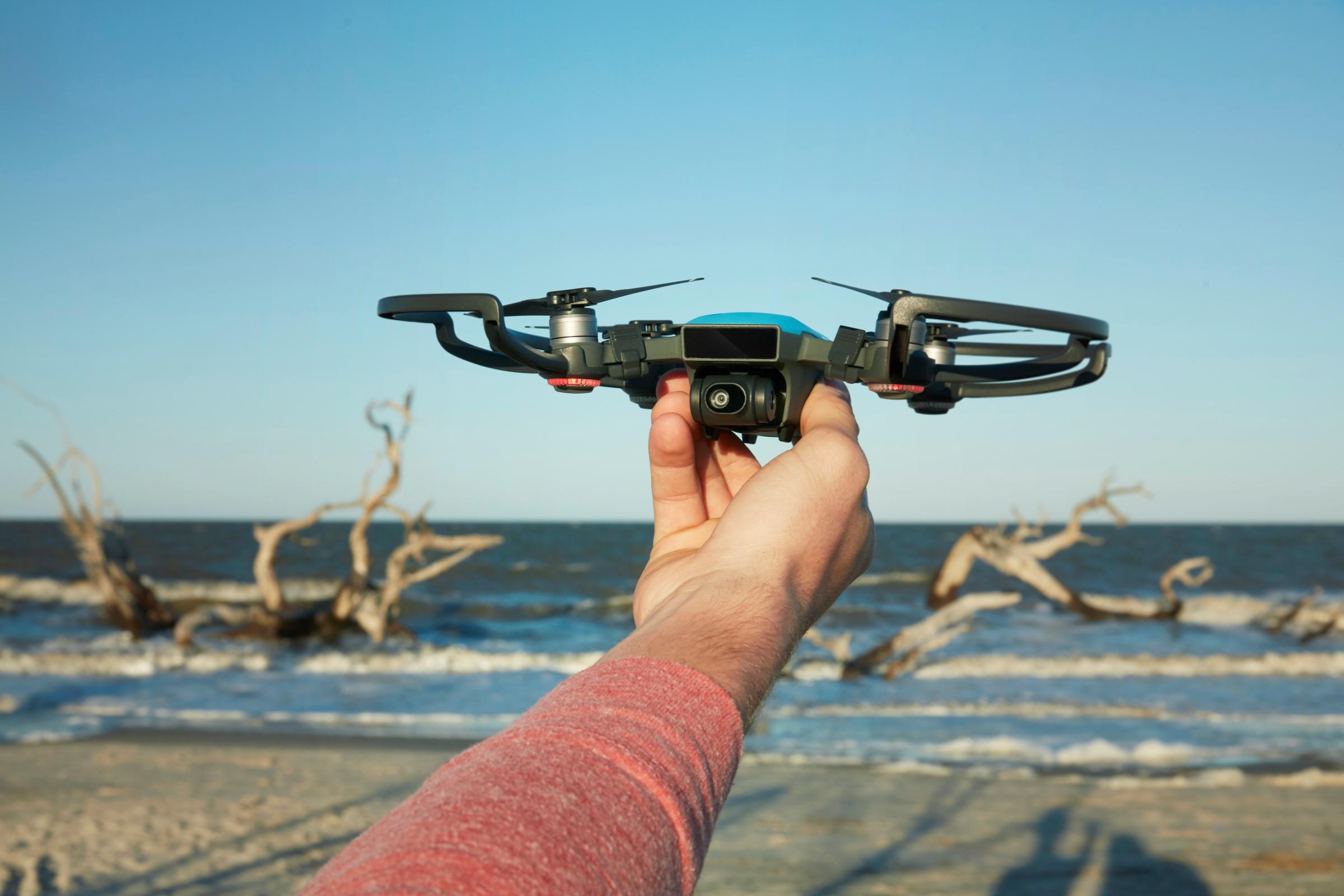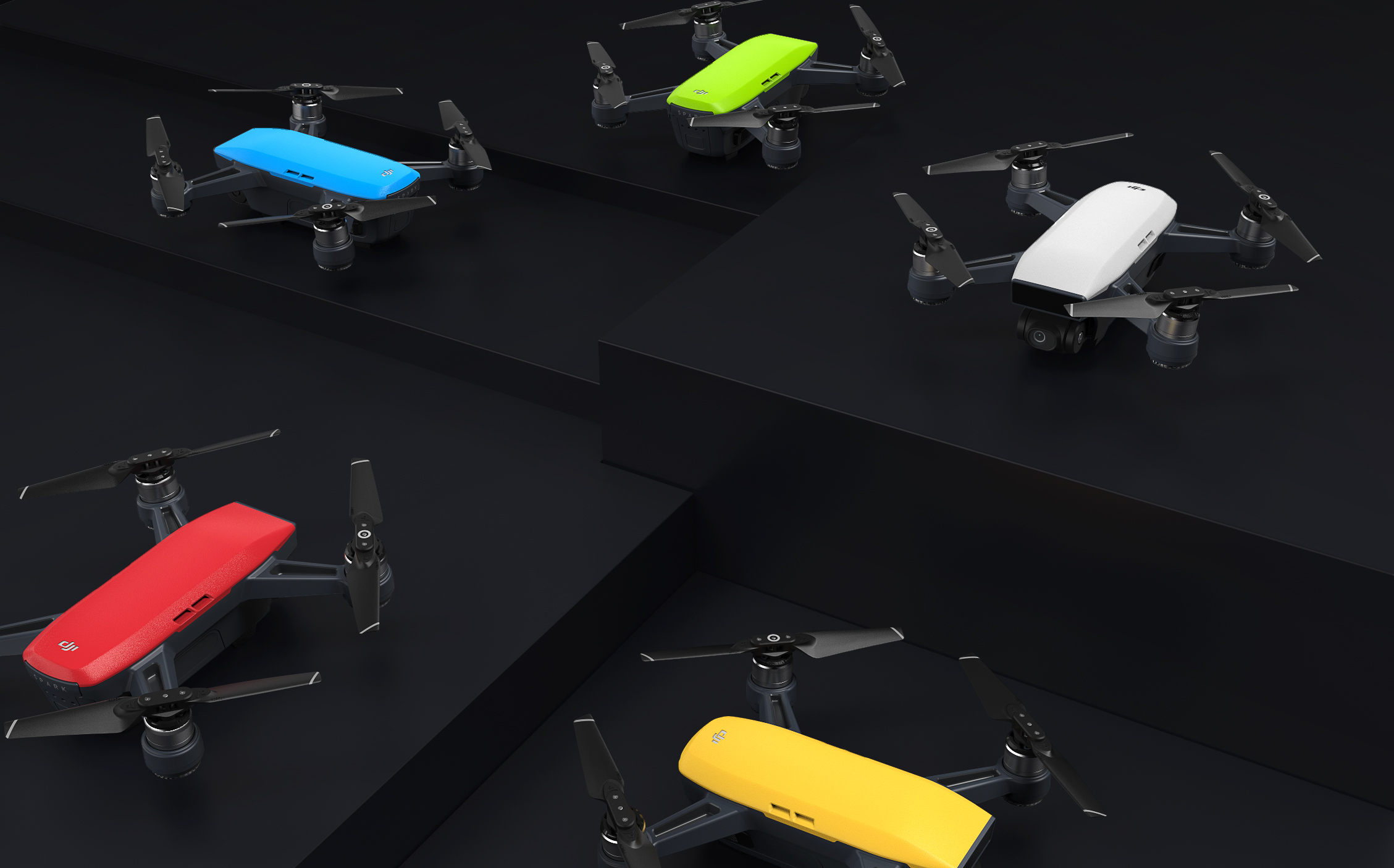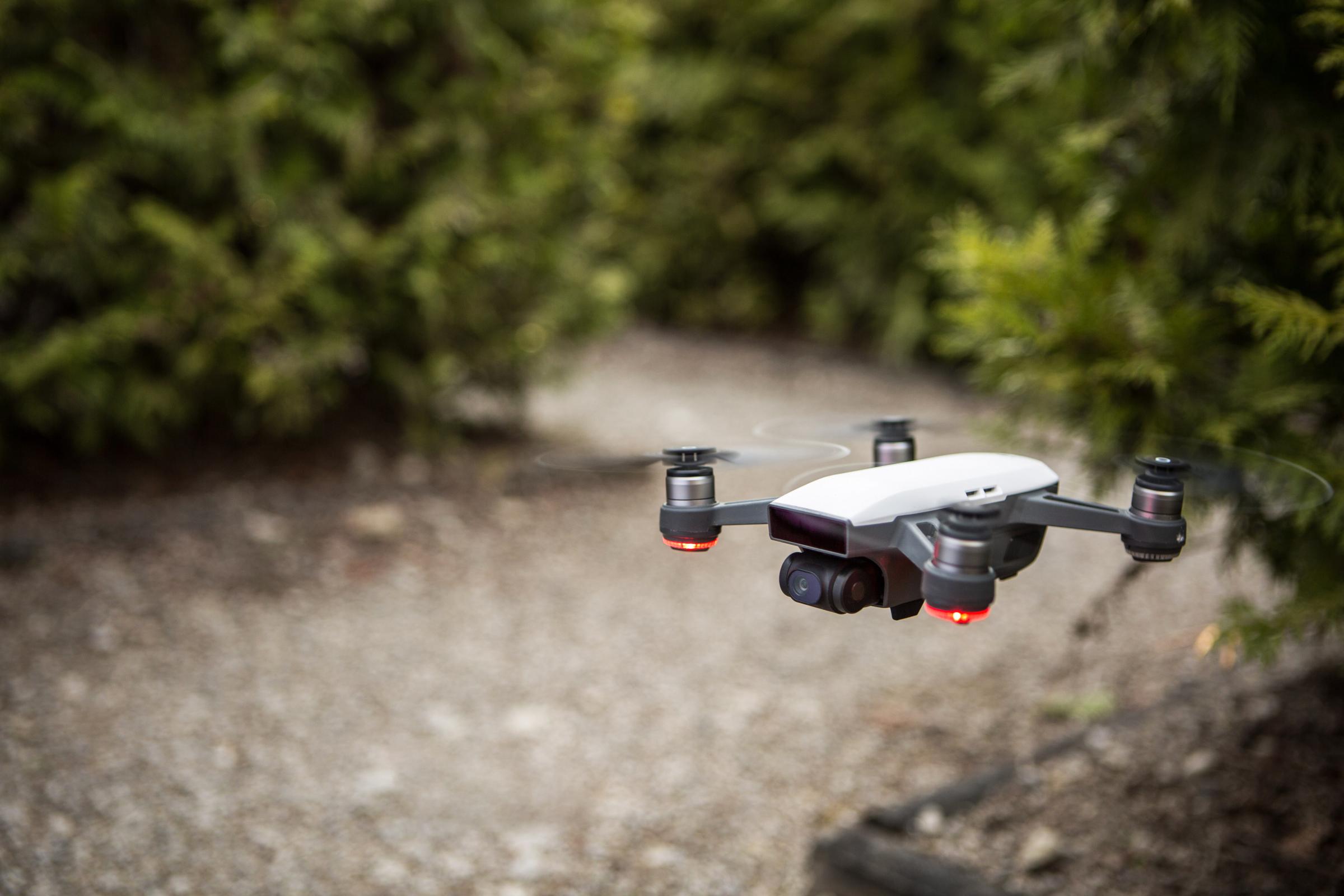With just two taps of a button, lights began blinking, propellers started to swirl, and a tiny camera set about studying my face. All I had to do was release the miniature drone from my grip and it was instantly airborne.
Such is the experience with the new DJI Spark, the company’s smallest and cheapest drone yet. The $499 drone — half the price of the company’s high-end Mavic Pro — is about the size of a soda can, making even the compact Mavic look gargantuan in comparison.

But the Spark’s most compelling feature is the ability to launch and pilot the drone entirely through hand gestures. That advancement makes the Spark DJI’s most beginner-friendly model to date. While previous models could do things like take a photo when you made a specific hand gesture, they still needed to be flown with a separate controller. That stands to make the Spark an excellent choice for quick airborne photos, like a selfie stick on steroids.
Setting up the Spark involves charging the battery, attaching it to the body, and connecting your phone to the Spark’s on-board Wi-Fi. Then, tapping the button on the back of the Spark twice will prompt it to prepare for takeoff. Once it’s airborne, you can extend your arm toward the drone with the palm of your hand facing the device to get it to track your movements. Raising and lowering your arm adjusts the aircraft’s height, while turning your body in a circle with your arm extended signals the drone to revolve around you. You can also wave at the Spark to tell it to fly backwards about 10 feet, or move your palm forward to “push” it away.
When the Spark’s gesture controls work properly, they feel downright magical. But in my testing, the drone didn’t recognize my movements every time when flying indoors. That’s frustrating, especially because the 16-minute battery life doesn’t afford much time for trial and error. (The Mavic Pro, by comparison, advertises 27 minutes of flight time).

Launching the Spark from my palm always worked, but it failed to keep track of my hand afterwards roughly half of the time. Results might improve while flying outdoors, but it’s still a disappointment because DJI is advertising indoor use as a notable feature for the Spark. That said, the Spark is good at letting you know when it’s tracking you and when it isn’t: The LED lights on the front of the Spark shift from yellow to green to signal when it’s looking for you versus when it’s successfully interpreted a command. It’s also worth noting that even when obstacle avoidance is turned on, it’s best to fly with caution. During our test, the Spark didn’t have a strong GPS signal (since we were flying indoors), which means we had to fly around objects manually.
While the Spark may not be perfect, it’s certainly a step in the direction of making drones smarter, easier to use, and more portable. You’ll still need to use the smartphone app for precise steering, but the fact that I didn’t even consider using a dedicated controller for the Spark is very telling.

More Must-Reads From TIME
- The 100 Most Influential People of 2024
- The Revolution of Yulia Navalnaya
- 6 Compliments That Land Every Time
- What's the Deal With the Bitcoin Halving?
- If You're Dating Right Now , You're Brave: Column
- The AI That Could Heal a Divided Internet
- Fallout Is a Brilliant Model for the Future of Video Game Adaptations
- Want Weekly Recs on What to Watch, Read, and More? Sign Up for Worth Your Time
Contact us at letters@time.com